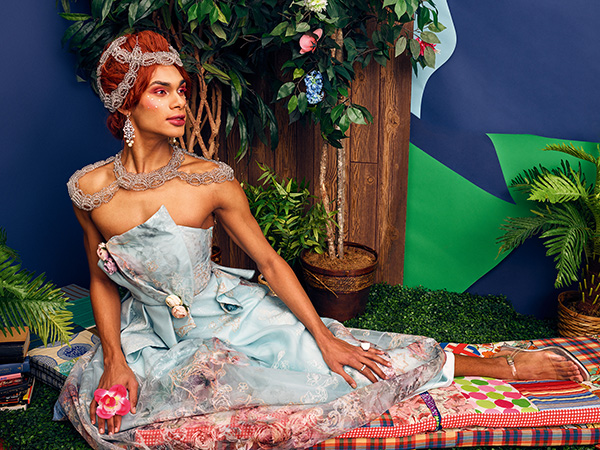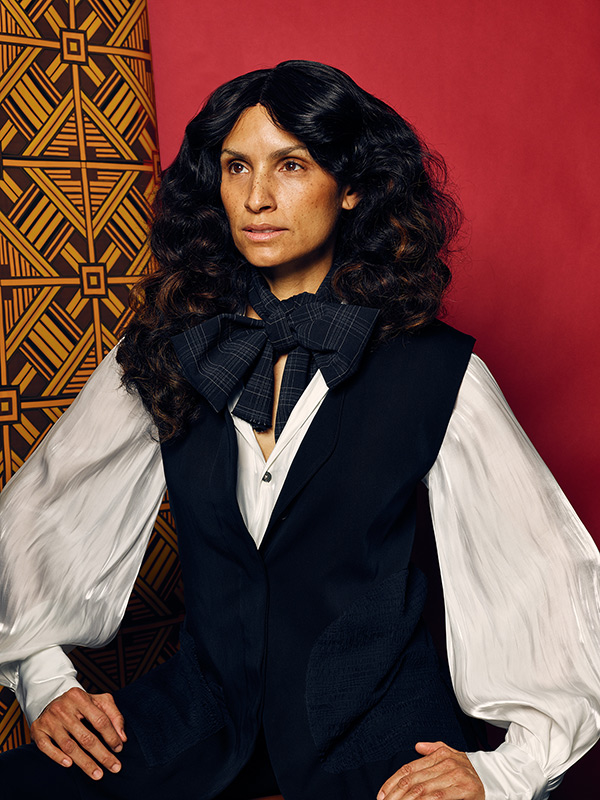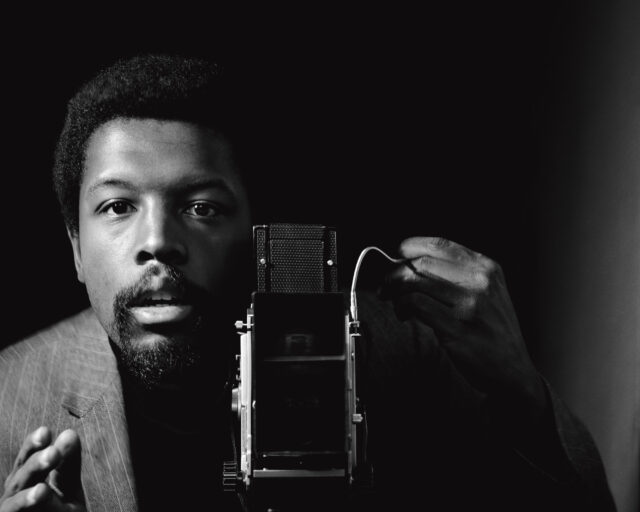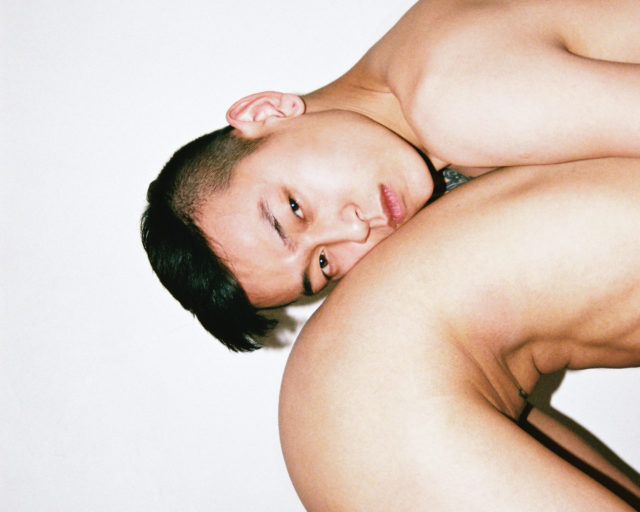Mickalene Thomas, Untitled, Orlando, 2019, for Aperture
Courtesy the artist
The 1992 film adaptation of Virginia Woolf’s 1928 novel Orlando, starring Tilda Swinton in the title role, is a British period drama that begins during the reign of Queen Elizabeth I in the early 1600s. The queen, played prodigiously by Quentin Crisp, fancies a young, boyish, aristocratic poet, Orlando, and grants him the male privilege of estate ownership. The narrative travels progressively through more than three centuries of attitudes, politics, fashions, and, most remarkably, relationships between the sexes.
While the word gender only appears once in Woolf’s work of fiction (in reference to Orlando’s “China robe of ambiguous gender”), the concept of gender is cast radically and rightly as a plaything in the film. Swinton, with delicate quietude and characteristic androgyny, evolves from man to woman in what she has called “a nonperformance.” Her—or is it still his?—status and authority diminish as director Sally Potter advances the plot, but subjectivity, desires, and matters of the heart remain unbowed to expectation. In one of the saga’s most enduring scenes, Orlando runs into a labyrinth on the lush grounds of an English manor. The camera follows as style, disposition, and century change—apt metaphors for identity in flux.

Courtesy the artist
It all leaves quite an impression and has inspired a new set of images by the painter and photographer Mickalene Thomas. “I wanted to be Orlando,” she says, explaining that in 1992, when the film premiered, experiments in sexuality, gender, and the social role of each were a crucial revelation in modern cinema. What had been rarely shown on the silver screen prior to Orlando had been privately felt by many, including Thomas, who desired to see cinematic and worldly expressions outside of prescribed binaries.
“The character Orlando, knowing that she was a woman, but was identifying as a male, resonates so deeply,” says Thomas of the moments in the film where the character steps outside of themself and peers directly at the camera as if to say, “I know who you are.” “As a teenager, when I was really coming to terms with my own sexuality, and was very much more androgynous than I am as my adult self, it felt so reassuring, safe, and exciting to see that on-screen.”

Courtesy the artist
In these studio portraits, Thomas’s muse and partner, Racquel Chevremont, and the performance artist Zachary Tye Richardson extend the long spectrum on which Orlando exists in the imagination, while offering a fresh embodiment of Woolf’s amorphous vision within the context of Thomas’s study of the classical muse. Richardson and Chevremont, wearing ornate suits and beautiful gowns, elaborate wigs and bright jewelry, are cast desirously against a lush collage of plants, pillows, wood paneling, and colorful backdrops. Through Thomas’s eyes, the mise-en-scène has always been an opportunity to display a mélange of masculine and feminine elements, a proxy for the androgyny abounding in nature: her images are an attestation of what is natural.
According to Thomas, the pictures also are gamboling with one of the film’s central themes: passing. It’s something black women, femmes, and anyone existing outside of whiteness have had to rebel against, both racially and sexually, in an effort to claim space for survival and power, to make a world sensitive to their realities. Thomas’s portraits, such as one of Richardson in a blonde wig, a full face of makeup, and a pink lace dress that reveals a defined torso, or one of Chevremont in a black wig that gives her a masculine appeal, complicate notions of passing, asking: Is it worth it when so much of the self has to be given up to exist in tradition?

Courtesy the artist
Throughout her career, Thomas has expanded the notion of the muse to include black women in her paintings and photographs, among them past lovers, friends, celebrities, mentors, and her late mother, Sandra Bush. For her Orlando inspired portraits, she draws on the muse-like relationship between Queen Elizabeth I and Orlando, as well as iconic nineteenth-century paintings. Contesting the male gaze, gender, and environmental dynamics in Édouard Manet’s Le déjeuner sur l’herbe (The luncheon on the grass, 1862–63) and Paul Gauguin’s Spirit of the Dead Watching (1892), however, Thomas’s muses also embody the spirit and pageantry of the fa’afafine, a third-gender community in Samoa of boys who are raised as girls.
Thomas dismisses the comfort of neat categorization and applies what feminist scholar bell hooks has called an “oppositional gaze” to the construction of the images that tell a story of black identity play “from inside the circle.” Thomas’s portraits are just expressions of agency and fluid sexuality that represent, through dress, gesture, and environment, the in-between and hard to pin down. The pictures allude to black women loving other black women, and to femmes who love black men, in a world that doesn’t often love any of them back. Like Orlando, these figures, who have not historically been of any value in Western painting, in pop imagery, or on the big screen, now exist profoundly in pose, composition, and style in Thomas’s universe.
Read more from Aperture issue 235, “Orlando,” or subscribe to Aperture and never miss an issue.
Mickalene Thomas’s photographs were produced by ROOT STUDIOS and styled by Paris Warren.


























